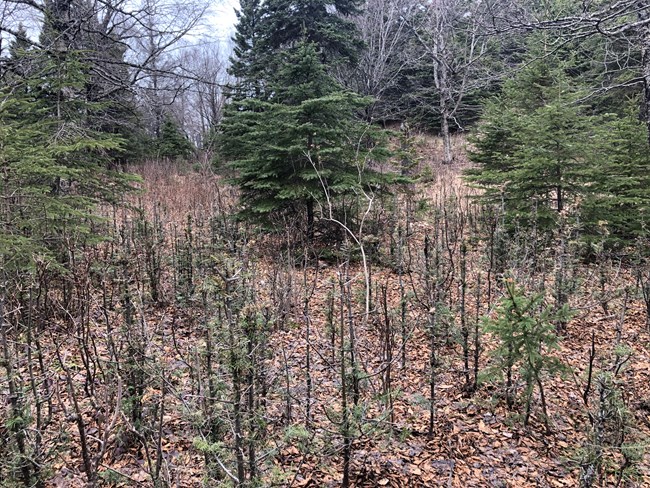Last updated: March 31, 2023
Article
Climate Change at Isle Royale: Balsam Fir
The balsam fir tree is one of the most common conifer species on Isle Royale. As the primary food source for moose during winter months, the evergreen plays an integral role in the island’s ecosystem.

Bridget Byrne
Moose Buffet
Though summer provides a plentiful buffet, moose are left with few dietary options in the winter. Leafy, nutritious plants like thimbleberry are gone, and the giant mammal must subsist on what’s left: woody evergreen species, like balsam fir.
In the winter, balsam fir becomes the main staple of an Isle Royale moose’s diet. In order to survive the harsh winter conditions, moose must expend almost all of their energy finding food sources. Moose are so persistent in their consumption of balsam fir that the species has become severely over browsed; some specimens even suffer stunted growth.
Climate Concerns
Though the balsam fir is plentiful now, it is a cold weather species, and is vulnerable to warming climates. As Isle Royale heats up, the habitat for this favorite tree diminishes, leaving limited opportunities for regrowth. Eventually, the balsam fir’s range will be pushed farther north, and the tree could become scarce – leaving moose with even fewer winter food options, and increasing the likelihood of starvation.
